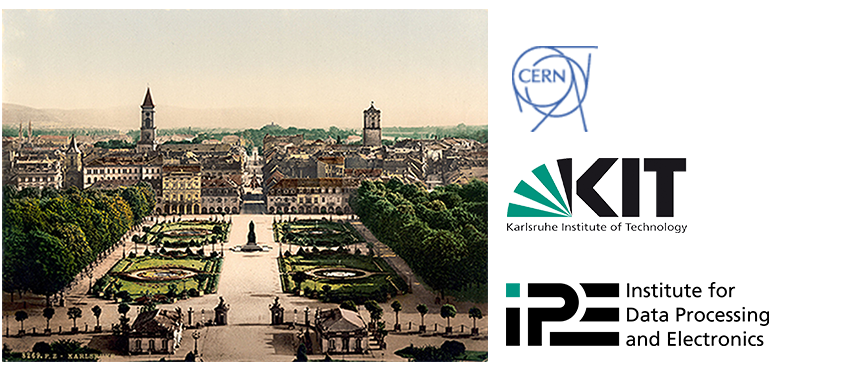Speaker
Description
Petiroc2a is a 32-channel front-end ASIC designed in AMS 0.35µm SiGe technology to read out Silicon Photomultipliers (SiPMs) for applications requiring accurate time resolution and energy measurement over a large dynamic range.
Each channel integrates a 20GHz Gain Bandwidth preamplifier followed by an ultra fast discriminator and a TDC. The first incident photons can be measured with a time resolution better than 100ps. A low gain shaper ensures an energy measurement up to 400 pC. The 32 time and charge measurements are internally digitized by a 10-bit ADC.
Measurements will be detailed in this presentation.
Summary
Particle physics experiments and medical applications are more and more demanding in terms of time and charge resolution to achieve imaging calorimetry or time of flight measurements.
Petiroc2a, which stands for PET Integrated ReadOut Chip,is a System-on-Chip designed in AMS 0.35µm SiGe technology which integrates 32 channels optimized for very large dynamic range input charges and for accurate time measurement.
Petiroc2 embeds an internal 10-bit ADC for energy measurement and a 25ps-bin TDC for time measurement. A second-stage trigger level is integrated to provide an efficient energy cut at the very first stage of the front-end electronics to avoid excess data rate in back-end electronics. The power consumption has been minimized to 6mW/channel.
The fast trigger line is made of a 20 GHZ Gain Bandwidth Product preamplifier followed by an ultra-fast discriminator which preserves the bandwidth. A Time to Amplitude Converter (TAC) is integrated for each channel and enables a time measurement with a 25 ps step. This time measurement is then internally digitized by a 10-bit ADC.
The charge measurement line is composed of a variable time shaper (25 ns up to 100 ns) followed by an analogue memory to store the maximum value of the charge.
A discriminator follows each of the charge amplifiers to provide a “OR32_charge” information that is very useful for PET applications to select only events corresponding to the annihilation of two 511 KeV gamma photons.
Petiroc2A can be used either in analogue mode using the 32 trigger outputs and the multiplexed charge output or in full digital mode using the internal ADC and TAC.
The chip was produced in an engineering run in 2015 and available for tests since then. Many test bench measurements were made using a Picosecond pulser showing a bandwidth larger than 1GHz for the preamplifier and its discriminator, ensuring a time walk smaller than 350 ps. Trigger efficiency measurements show that each channel can easily trigger on one photoelectron. As for the jitter, it has been measured down to 15 ps (test bench jitter floor) when the chip is used in the analogue mode but this value increases up to 45 ps when the clocks of the digital part are active and generate coupling effects through the substrate. The TDC time resolution has been measured to 70ps rms which is below the 100ps required for PET applications but that could be significantly improved by reducing the clock coupling and a migration to TSMC130nm with triple well technology is foreseen.
Energy measurements have also been performed showing an Integral Non Linearity better than 1% for charges up to 2500 photoelectrons or 400pC which is over the expected charge for a 511keV gamma in a crystal, assuming a 106 gain of the SiPM.
Measurements using SIPM matrixes will be soon performed using a test board designed to provide a full integrated SIPM read-out ASIC for time of flight application.
Measurements will be detailed in this presentation.
